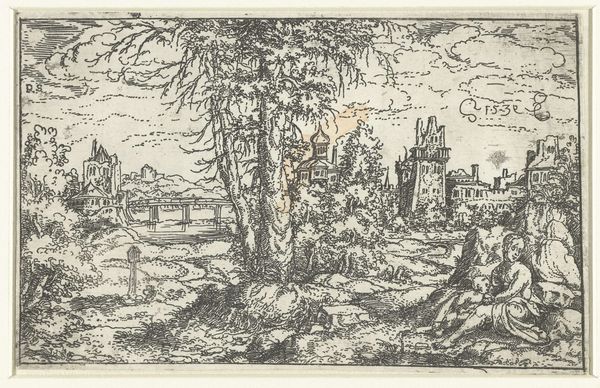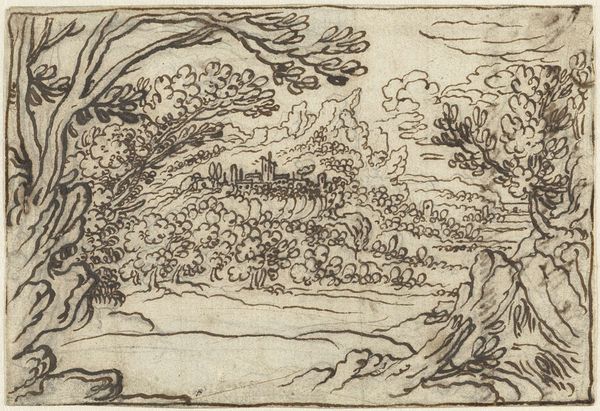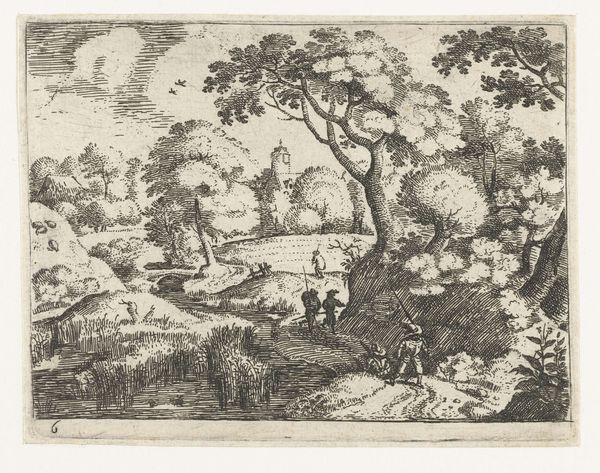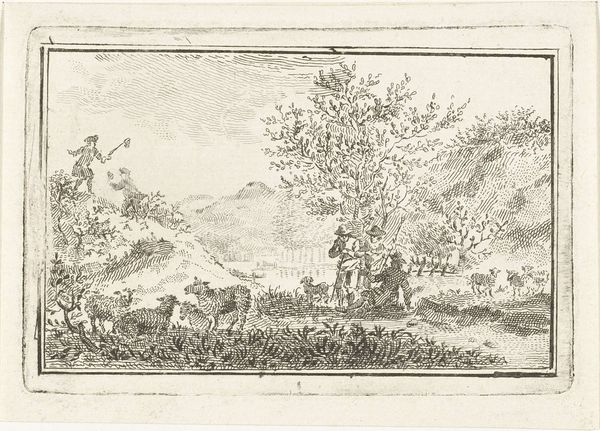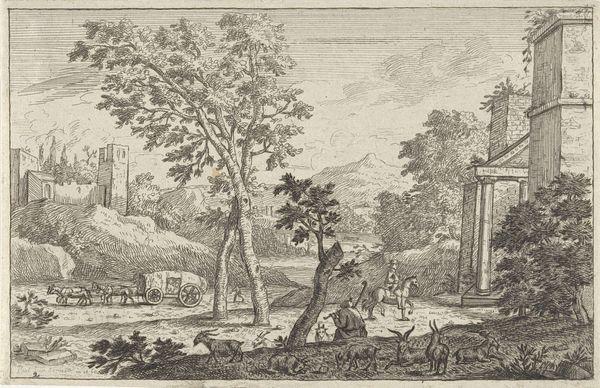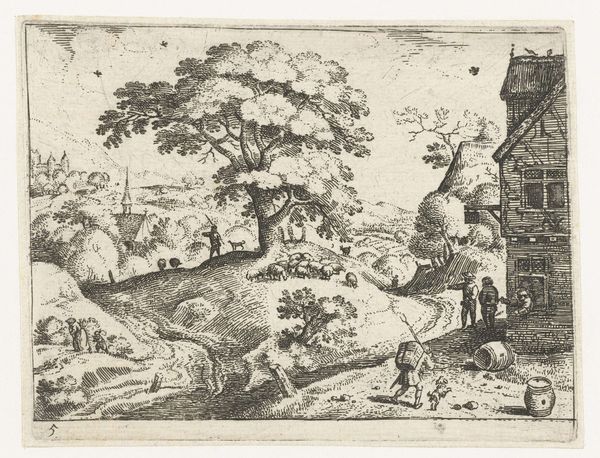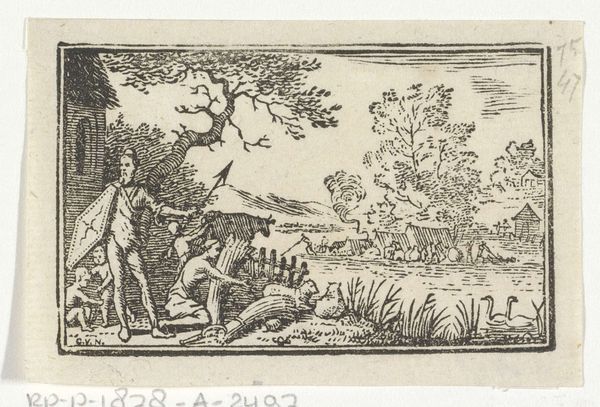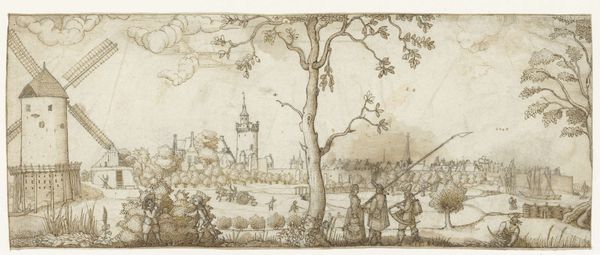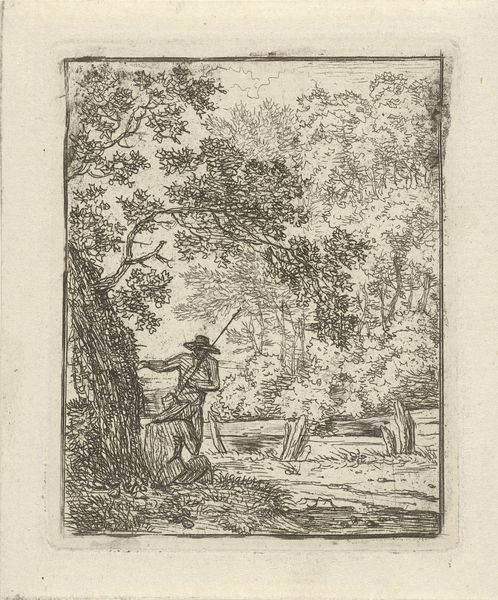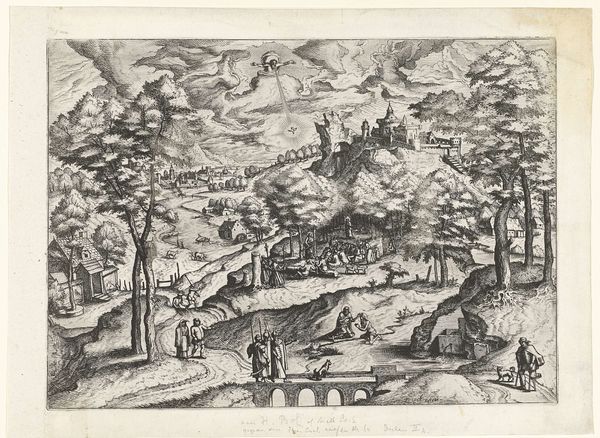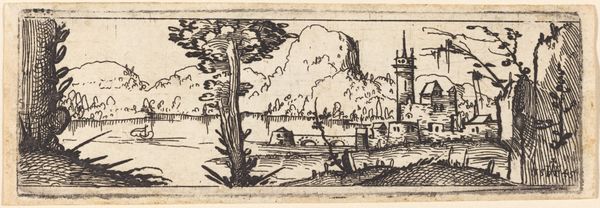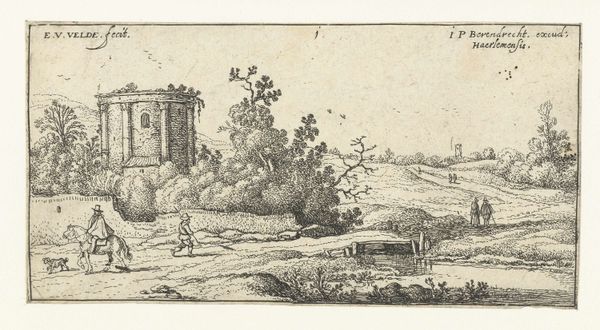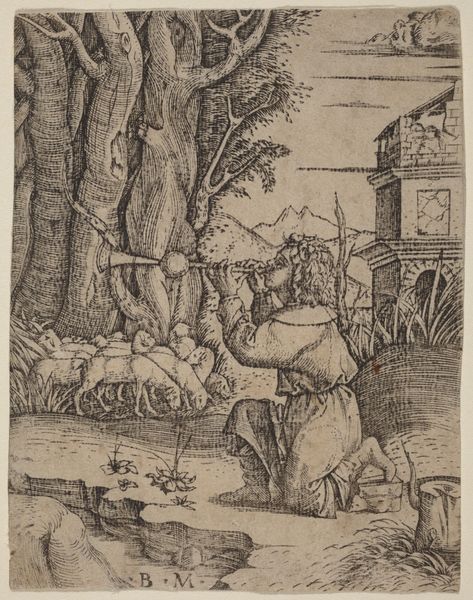
drawing, etching, ink, pencil
#
drawing
#
pen sketch
#
etching
#
landscape
#
ink
#
pencil
#
genre-painting
#
realism
Dimensions: height 45 mm, width 63 mm
Copyright: Rijks Museum: Open Domain
Curator: We're now looking at Hermanus Fock's "Dorpsgezicht met voetganger bij vrouw in deur," dating from between 1781 and 1822. It’s an intriguing etching in ink, pencil, and pen, currently residing here at the Rijksmuseum. Editor: My immediate impression is of quiet industry. The detail captured with what I imagine are a minimum of lines suggests a life closely observed and diligently rendered. The overall tonal palette is limited. Curator: Indeed. It provides a glimpse into everyday life within a village, showcasing what appears to be a genre scene rooted in realism. We observe a man with a basket approaching a woman at a doorway. How does this depiction strike you? Editor: Well, it raises questions of access and labor. The woman standing in the doorway could represent a liminal space between the private and public spheres, but also her potential confinement. What is the man carrying? Is this a transaction? Is it consensual or simply the economic reality of that time period? Curator: From an art historical perspective, these glimpses of daily routines served an important purpose. It helped viewers—largely the urban upper class at the time these were popularized as prints—to see themselves, their values, and their place within a wider social structure and changing economical dynamics. Editor: So the "genre" aspect flattens specific narratives and individual experiences into types that reinforce class divisions and normalize certain economic inequalities, while overlooking the real lived experiences of individuals? It makes me consider the perspective of both figures and wonder how their realities have been manipulated or suppressed over the course of time by forces seeking to reinforce hierarchies. Curator: I think it’s precisely these layered questions about whose story gets told and how representations reinforce broader social structures that keep such artworks relevant and thought-provoking today. Editor: Agreed. Even a seemingly simple village scene can hold profound commentary on labor, gender, and societal structures, if we know what questions to ask.
Comments
No comments
Be the first to comment and join the conversation on the ultimate creative platform.
